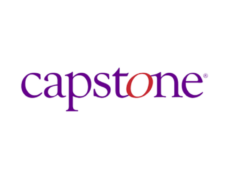
Students have gone back to school, but instead of heading to the classroom, COVID-19 has many sitting in a Zoom meeting. Teachers have been given a difficult task: keep students engaged in a new and unfamiliar environment. Seeing how digital content creators and streamers engage with and maintain the interest of their audience can provide valuable insights for educators looking to bond with their students through digital technology.
At Ivy Scholars, we know the unique difficulties remote education poses. Over the past few years, we have operated as an entirely online company ourselves. While we have learned much from our experience, more can be learned from the entertainers on Twitch and Youtube who have made their entire living and persona online.
Parasocial Relationships and Video Game Streamers
In psychology, parasocial relationships are the one-sided or otherwise deeply unequal relationships formed between those who create content and those who consume it. While teachers enjoy and should pursue more equitable connections with their students, parasocial relationships are easier to foster and maintain in a virtual environment. These methods work best in large, virtual classrooms, where students come to know much more about the teacher than the time-strapped teacher can about each student.

Traditionally, the main draws of these online entertainers have been a sense of community, escapism, and gratification. People looking to experience a community and vicarious achievement in a setting outside of sports turn to streamers on Twitch and elsewhere. The online content then falls into two general categories: (1) those in which the main feature is the content, and (2) those in which the main feature is the streamer themselves.
Educators will need to emulate both approaches, and employ all three of the main draws in order to foster a feeling of connection with their classes. The main focus of their lessons must, of course, be the information conveyed, but they also need to ensure the student’s engagement is high enough that they pay attention to the lesson in progress.
Employing These Techniques
The first – and perhaps easiest – of the main draws that educators should seek to establish is a sense of community. One useful strategy is to break the class into periods, during which the teacher alternates between giving a lesson to the entire class and asking students to interact with each other in a semi-public chat forum. During these periods, whenever the teacher briefly acknowledges or responds to particularly insightful questions or comments, they reestablish the communal aspect of learning. This works best if all of the participants in the class except for the teacher are muted, and with students and teachers alike having some familiarity with the technology already.
Escapism and gratification are more difficult to model in an educational environment, and may not be possible in some fields. Creating these effects in a parasocial relationship requires creating a problem, which users feel personally involved with, then providing resolution and catharsis. For example, when discussing a historical event such as the Second Punic War, put your students in the position of the Romans. Here there is a clear problem in the implacable and seemingly unbeatable Hannibal Barca. Approaching this problem with students will draw them in, while sharing how it was resolved will provide catharsis; a feeling of vicarious relief at overcoming a problem.
This approach naturally lends itself to the humanities and social sciences, where narratives can more easily be employed as a teaching method. However, in the natural sciences, using these “problem-to-catharsis” narratives to introduce and frame topics can still help draw interest; the sense of community, meanwhile, then will help maintain it.
An example (using chemistry):
Teacher: “Anyone ever set their kitchen on fire?”
Poll for the chat: “No.”
Teacher: “It happens more often than you think; you’re cooking something, stop to answer the phone, get to checking facebook…and then BOOM, your stove is on fire now; what do you do about it, put it out or run away?”
Poll for the chat: “Put it out.”
Teacher: “You have flour and baking soda within easy reach, which is it going to be, pick quickly, the fire’s rising.”
Poll for the chat: “Flour.”
This example segues nicely to dust explosions and oxidation reactions. It is not possible to take up an entire class period with such stories, but their use can spark a greater investment in the topic of the class. This benefits the instructor in two primary ways: (1) increasing student engagement with the material, and (2) improving the overall camaraderie of the class.
Conclusion
The difference between the anecdotes teachers routinely use in class, and those suited for online environments is the interaction. When telling such an anecdote live there isn’t room for comments, but when student comments can come in silently and simultaneously in a chat, they are far more useful for increasing engagement. Research has shown a relationship between viewer’s feelings of emotional and parasocial engagement with a desire to continue watching. Teachers may use this knowledge in turn to help them increase their students’ interest and engagement.
Teachers may not have the generational savvy of popular streamers, but by employing their tricks, they can keep classes engaging and help their students achieve their own top scores.
Sasha Chada is the founder and CEO of Ivy Scholars.
Featured Image: Caspar Camille Rubin, Unsplash.








No Comments